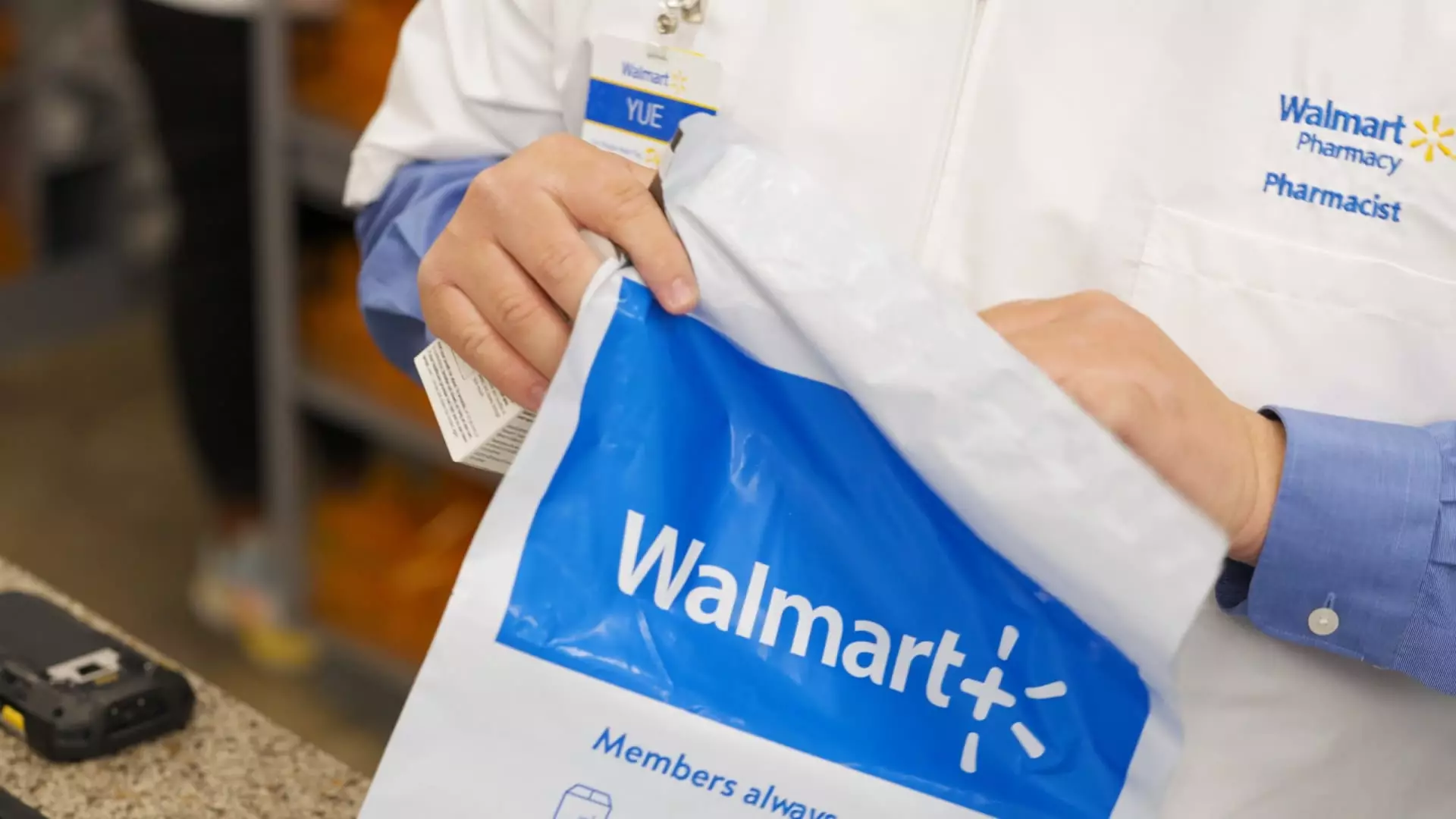In recent years, the retail pharmacy sector has seen significant transformations, particularly with the rise of e-commerce and evolving consumer preferences. With traditional drugstore chains like CVS and Walgreens facing considerable challenges—ranging from declining profits to the need for strategic overhauls—Walmart has introduced a bold new initiative: doorstep delivery of prescription medications. This strategic move not only aims to enhance customer convenience but also positions Walmart as a formidable competitor in the increasingly competitive health and wellness market.
As Walmart announces the launch of its prescription delivery service, currently available in six states (Arkansas, Missouri, New York, Nevada, South Carolina, and Wisconsin), it sets a clear trajectory towards expansive growth. The company aims to offer this service in 49 states by the end of January, although North Dakota will remain an exception due to existing state regulations. By integrating prescription deliveries into its existing service offerings, Walmart is not only responding to consumer demand but also capitalizing on the growing trend of convenience shopping.
Walmart’s unique approach allows customers to order a variety of items alongside their prescriptions, catering to the busy lifestyles of modern consumers. This means that alongside medications, shoppers can receive everyday essentials such as tissues or comfort foods, like chicken noodle soup—a nod to the convenience-centric shopping experience many consumers seek.
The introduction of Walmart’s delivery service comes at a time when traditional drugstore chains are grappling with declining market shares. CVS and Walgreens are experiencing the consequences of rising operational costs, declining reimbursement rates on prescription drugs, and intensifying competition from both online retailers like Amazon and other big-box stores.
Notably, while these entrenched pharmacy chains offer their own delivery options, Walmart’s initiative poses a significant challenge. As consumers gravitate toward a more integrated shopping experience, characterized by multi-item deliveries, it remains to be seen how much market share Walmart can capture from these established players. Tom Ward, Walmart’s chief e-commerce officer, indicated that this new delivery service was born from customer inquiries, highlighting a significant shift in consumer behavior toward holistic shopping experiences.
Operational Insights and Safety Measures
Walmart’s delivery service for prescriptions is structured around customer convenience, featuring a standard $9.95 delivery fee, which is waived for Walmart+ members. This pricing strategy not only attracts a broader customer base but also aligns with the company’s famous low-price guarantee across its product range. Importantly, the new delivery system includes robust safety measures; medications are packed in tamper-evident packaging, ensuring that customers receive their prescriptions securely.
Real-time tracking of orders through Walmart’s app is another crucial feature, allowing customers to monitor their deliveries closely. Moreover, when opting for delivery of new prescriptions, customers are prompted to engage in consultations with pharmacists via phone, ensuring that they receive necessary medical guidance in a timely manner. This focus on safety and customer interactions may help assuage concerns about transitioning to digital pharmacy services.
As of recent stock analyses, Walmart’s value has soared around 54% in the past year, contrasting sharply with the declining fortunes of CVS and Walgreens, whose stocks have plummeted by approximately 26% and 60% respectively. This contrasting trajectory raises pivotal questions about the future of traditional pharmacy models. With Walmart holding only a modest 5% of the prescription drug market share and CVS leading with over 25%, the implications of Walmart’s new delivery service could further exacerbate existing pressures on drugstore chains facing investor scrutiny and market erosion.
The situation is compounded by CVS’s recent executive shake-up and its efforts to streamline operations by eliminating thousands of jobs and closing hundreds of locations. Similarly, Walgreens is reassessing its footprint, announcing intentions to close over 1,200 stores in the coming years, a move indicative of its unprofitable segments.
As Walmart continues to expand its health and wellness services, it will be interesting to observe how these developments reshape the pharmacy landscape, potentially leading to broader consequences for consumer healthcare access and the business models of existing players.
Walmart’s foray into prescription delivery is not merely a response to consumer demand but signifies a strategic pivot to capitalize on shifting market dynamics. As the company looks to bolster its health and wellness revenue—currently accounting for about 12% of its annual U.S. earnings—the implications for traditional pharmacy chains could be substantial. The retail pharmacy sector is at a crossroads, and Walmart’s new offering may very well redefine consumer expectations and competitive strategies in this critical market.

